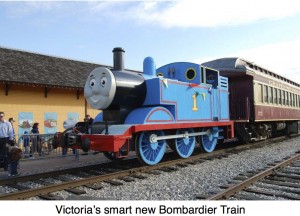We continue Tarquin O’Flaherty’s discussion of George Stephenson, Trains and the industrial revolution and their impact on the politics of the day. (You can find the previous 16 pieces by searching ‘Trains’ in the ‘Search’ box, right.) 
It is difficult to comprehend the enormous change in the public’s attitude to railways between the opening of the earlier Darlington line and that of the Liverpool-Manchester. The Darlington line was built despite enormous pressure for it to fail.. George Stephenson’s dogged persistence, his absolute belief in himself and the project, were the only factors that kept the enterprise alive. The official society of engineers had poured scorn and ridicule on Stephenson’s presumption. What he was attempting, they’d said, was, in engineering terms, absolutely impossible. This presumptuous, uneducated Northerner was made a laughing stock, and removed from his new post as head of the barely begun Liverpool-Manchester railway.
Reinstated, he was again ridiculed by the London based company of engineers. Finally, financial interests demanded the London engineers and Stephenson prove or disprove the viability of the railway system. A proper set of trials of these new fangled machines was arranged. At Rainhill, as we have seen, George kept his head down and trounced all comers.
Quietly at first, but steadily, financial interest was growing. Money could see that railways were much faster than traditional waterborne vessels, and one train could carry many times the vessels’ cargo weight. All over the world, George Stephenson’s railway genius was about to trigger an explosion in railway building.
Undoubtedly, August 1830 was George Stephenson’s finest hour. By Christmas of that year his railway’s passenger carrying service had driven horse drawn coaches off the route almost entirely. From September to December the railway carried over 71,000 passengers. In 1831 it carried almost half a million.
Farmers, who’d initially tried to block the railway, now found huge markets available for their animals and produce. All they had to do was get them to the station.
Very respectable profits were being made and the world began to clamour for a piece of the pie. Associating George Stephenson’s name with a new railway was a guaranteed way of attracting investors. George was as busy as a bee. He was now thoroughly respectable, respected and much sought after. He had worked hard, very hard, all through his life, proved his detractors wrong and now, at fifty was seeing some considerable rewards for his efforts.
But it would be the younger engineers, Robert Stephenson, Isambard Kingdom Brunel and Joseph Locke, George’s star pupil, and others, who would take control and drive the railway forward. (It had been young Locke at the wheel of the Rocket on that fateful day when Huskisson had been so horribly injured.)
Nevertheless, George Stephenson built many major railways in the years that followed. He also bought himself a grand house and invested in new and highly profitable coal.
